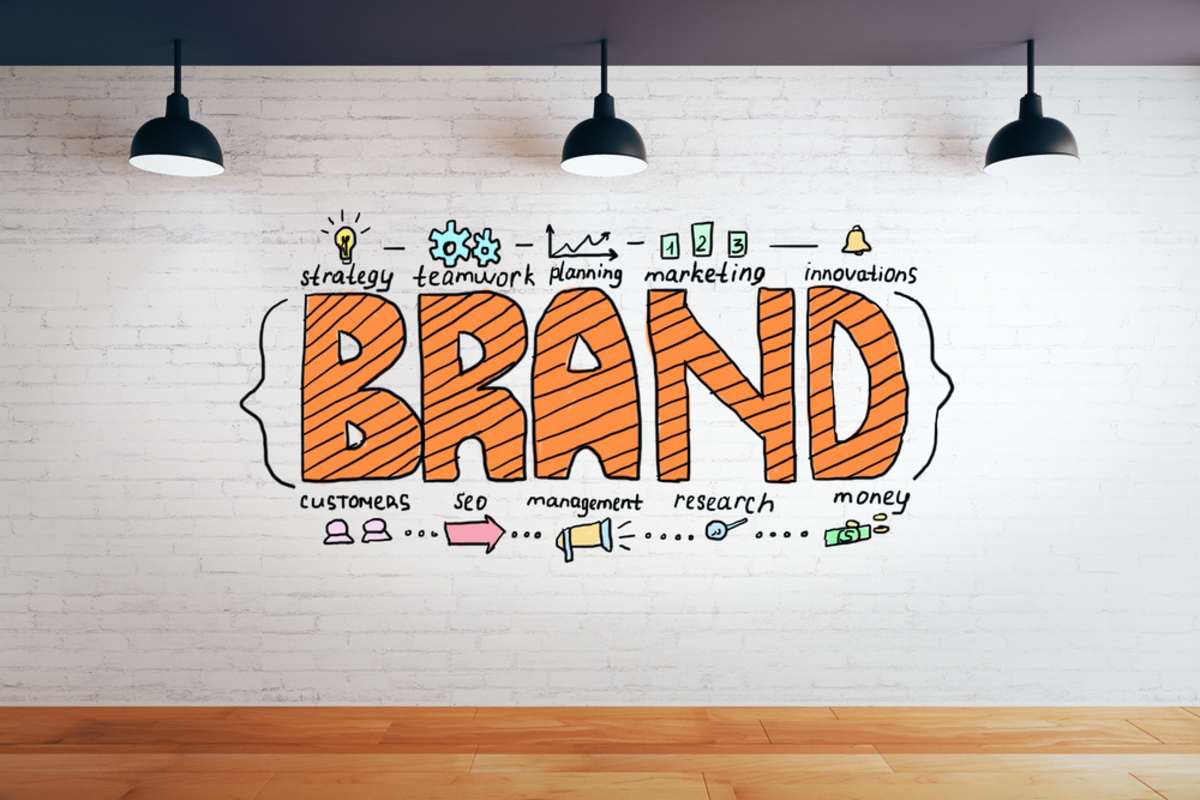
What Is Brand Management and Why It Matters in 2024
Listen to the article
What Is Brand Management and Why It Matters in 2024
For property managers (and other small businesses, like roofers and real estate agents), establishing a strong brand presence has become more crucial than ever.
Brand management plays a pivotal role in creating a unique identity and story for a company, differentiating it from competitors offering similar products or services. The ultimate goal of branding is to secure a special place in the minds of the target audience, making the brand their preferred choice when conducting business.
In this blog post, we will explore the question of "what is brand management," its significance in 2024, and how it can positively impact a company's success and inbound marketing effectiveness.
Your Brand Matters, but Do You Really Know Why?
A brand is more than just a logo or a tagline. A strong brand voice encompasses the values, personality, and overall perception of a company in the minds of its customers and prospects. A well-managed brand can evoke emotions, build trust, and establish credibility. Here are some key reasons why your brand matters for your company's growth!
A well-managed brand can evoke emotions, build trust, and establish credibility. Here are some key reasons why your brand matters for your company's growth!
-
Differentiation: In a crowded marketplace, having a strong brand helps you stand out from the competition. It gives your company a unique identity, making it easier for customers to recognize and remember you.
-
Trust and Loyalty: Brands that consistently deliver on their promises build trust with their audience. When customers trust a brand, they are more likely to remain loyal and become advocates, spreading positive word-of-mouth.
-
Perceived Value: A strong brand allows you to charge a premium for your products or services. When customers perceive your brand as valuable, they are willing to pay more for it.
-
Business Growth: A well-managed brand can drive business growth by attracting new customers, retaining existing ones, and opening up opportunities for expansion into new markets.
Knowing these crucial factors about the importance of building strong brand awareness, the next natural question you might have is about brand consistency (or a lack thereof).
What Happens When My Brand Is Inconsistent?
It happens to every company at some point. The messaging, graphics, typeface usage, or other brand elements are different from one channel or creator to the next.
However, consistency is key when building brand awareness. Inconsistent messaging and branding can have several negative consequences for your business and inbound marketing efforts, including the following:
-
Loss of Trust: When leads encounter inconsistency across different channels or even within the same channel, they lose trust in your brand. Inconsistency raises doubts about your company's reliability and professionalism.
-
Difficulty in Lead Generation: Inconsistency in branding can make it challenging to generate leads. Confused prospects may overlook your marketing efforts or fail to connect the dots between your brand and the solutions you offer.
-
Confusion: Inconsistent branding can lead to confusion among your target audience. When your messaging, visuals, or tone vary, it becomes harder for people to understand what your brand stands for, leading to missed opportunities.
-
Sales Stall or Decline: Inconsistent branding can directly impact your sales. When customers encounter mixed signals or unclear brand positioning, they may hesitate to make a purchase or choose a competitor instead.
Your brand speaks to your target audience. So when inconsistencies creep in, your company is at risk of losing your audience — or worse, generating the wrong audience for your company and goals.
How Long Does It Take to Build Brand Awareness?
Unfortunately, there's no set timeframe for building a company's brand awareness. A successful brand awareness strategy can take months or years, depending on your approach and how consistent you are with using your brand elements across all marketing efforts.
-
However, the bigger question is: How quickly can you "lose" successful brand awareness?
-
The answer is: much more quickly than it takes to build your brand and stand out in your marketplace.
It only takes a few instances of poor brand compliance to damage your brand's reputation. Whether it's an email campaign that's off-message, paid ads that don't follow branding guidelines, or a social platform that doesn't match your company's style guidelines to confuse customers and prospects and impact your brand's momentum.
Therefore, setting your brand and sticking to it across the board is crucial!
How to Get Everyone On the Same Page With Your Brand
Whether you have a small property management company or a real estate brokerage with multiple branches, chances are you have multiple hands involved in your messaging and marketing efforts. From your in-house marketing team to a social media manager or inbound marketing agency, inside and outside sales reps, multiple real estate agents, and others, it is challenging for almost any business to get everyone on the same page regarding messaging, styles, fonts, colors, and more to keep the brand consistent.
To ensure brand consistency and alignment across all touchpoints, getting everyone on the same page is essential. Here are some steps you can take.
Create a Brand Style Guide
We can't stress the importance of this crucial marketing element enough! Whether it's a one-pager with brand and style guidelines or a full-blown marketing guide encompassing logos, colors, imagery usage, and more, every company needs a basic brand style guide.
A comprehensive style guide outlines your brand's visual and verbal guidelines. This document should serve as a reference for all employees, contractors, and agencies involved in creating content or interacting with leads and customers.
Communicate and Educate
Make sure everyone understands the brand guide, including its style, tone, messaging, and values. Conduct training sessions, share examples, and provide ongoing support to ensure a deep understanding of your brand's essence.
A standard style guide is something everyone can reference when creating a marketing piece or communicating with leads and customers.
Enforce Brand Guidelines
Next to "having" a style guide, this is probably the next most important aspect of the best way to build brand awareness. You must enforce the style guide across all channels!
Consistency when creating brand awareness requires diligent enforcement. Regularly review and provide feedback on marketing materials, website content, social media posts, and other customer-facing touchpoints to ensure they adhere to the brand guidelines.
What Should Be In My Style Guide?
Whether it's time to create your company's first brand guide or you need to review your existing guide and make sure it supports your company's brand awareness, a comprehensive style guide should include the following elements.
Logo Usage
One of the most serious branding violations is incorrectly using your company's logo. Whether it's been stretched horizontally, the colors reversed out, or is simply missing a tagline or another crucial element, using the logo the wrong way screams confusion to potential customers.
In your style guide, specify how and where your logo should be used, including size and placement guidelines. Clearly define the minimum size requirements, spacing rules, and any acceptable logo variations.
Allowed Fonts and Usage
Outline the primary and secondary fonts that align with your brand's visual identity. Then, specify their usage in different contexts, such as headlines, body text, and captions.
Additionally, include guidelines on font sizes, formatting, and spacing to maintain consistency across all brand materials. Ensure these guidelines document incorrect usages of fonts and the appropriate ways to use them.
Imagery Guidelines
The look and feel of your brand extend to imagery used in marketing materials, blog posts, social media posts, and other collateral.
Define the types of images that align with your brand, whether it's photography, illustrations, or graphics. Provide examples of preferred image styles and compositions. Additionally, include guidelines on image resolution, color schemes, and any specific filters or effects to be used.
Color Palette
Clearly define your brand's color palette, including primary and secondary colors, as well as any associated color variations. Provide color codes (RGB, CMYK, HEX) for both print and digital applications. 
Also, specify when and how to use each color, ensuring consistency across all brand materials. Again, it's also helpful to provide examples of colors "not" to use or misusing the official colors.
Voice, Style, and Tone
Outline the preferred voice and tone that represents your brand's personality. Define the appropriate language style, whether it's formal, conversational, or playful.
Provide examples of messaging that align with your brand's values and audience. Additionally, establish guidelines for grammar, punctuation, and sentence structure.
Lastly, use the elements in your style guide to launch a brand awareness campaign! Paid ads can be an excellent channel for this type of advertising.
The Best Way to Build Brand Awareness (and Grow) is With Consistency
Your brand helps drive the success of your inbound marketing efforts! In the dynamic business landscape of 2023, brand management plays a critical role in differentiating your company from competitors and establishing a strong connection with your target audience. However, inconsistent branding can lead to confusion, loss of trust, and missed opportunities.
By creating a comprehensive style guide and ensuring everyone understands and adheres to it, you can maintain brand consistency and alignment across all channels. A consistent brand presence reinforces trust, attracts new customers, and fosters loyalty.
If you're ready to build a successful inbound marketing plan for more traffic and business growth or need help defining your brand with a style guide, Geekly Media can help. We can provide expert guidance to elevate your brand's presence in 2023! Speak to a Geek to learn more about how we help small businesses define their brand and incorporate it into successful marketing strategies for more leads and growth.


-1.png)
